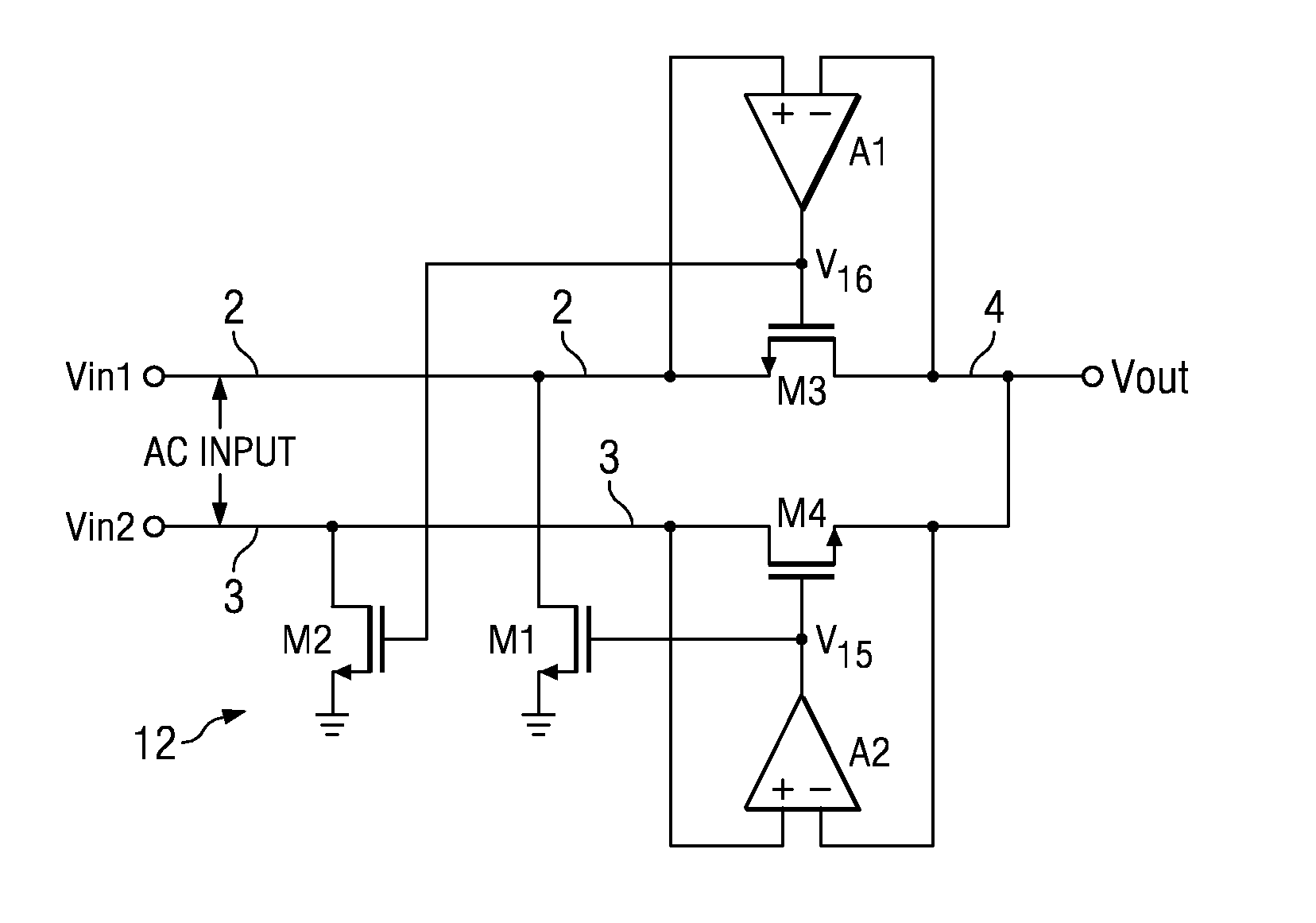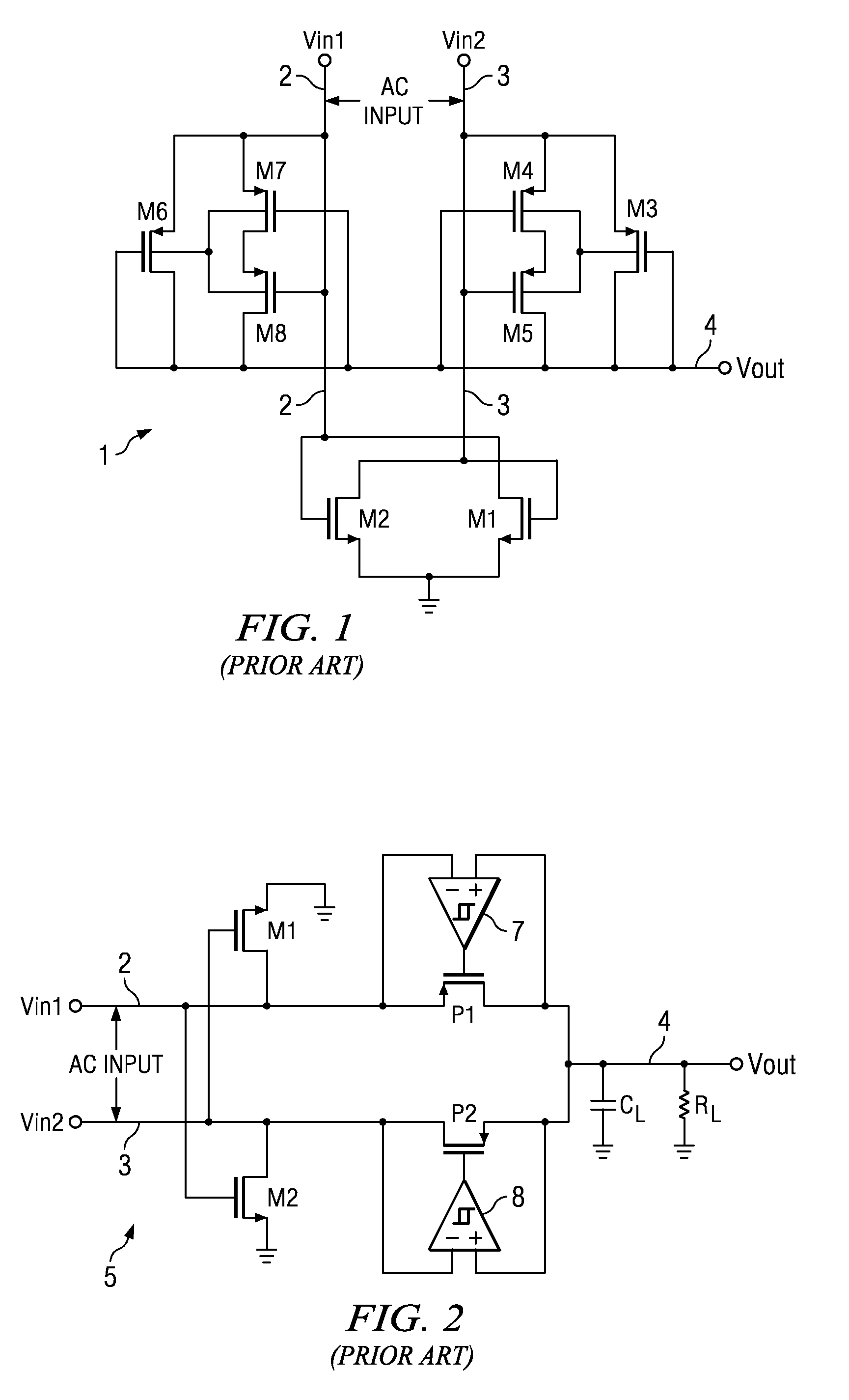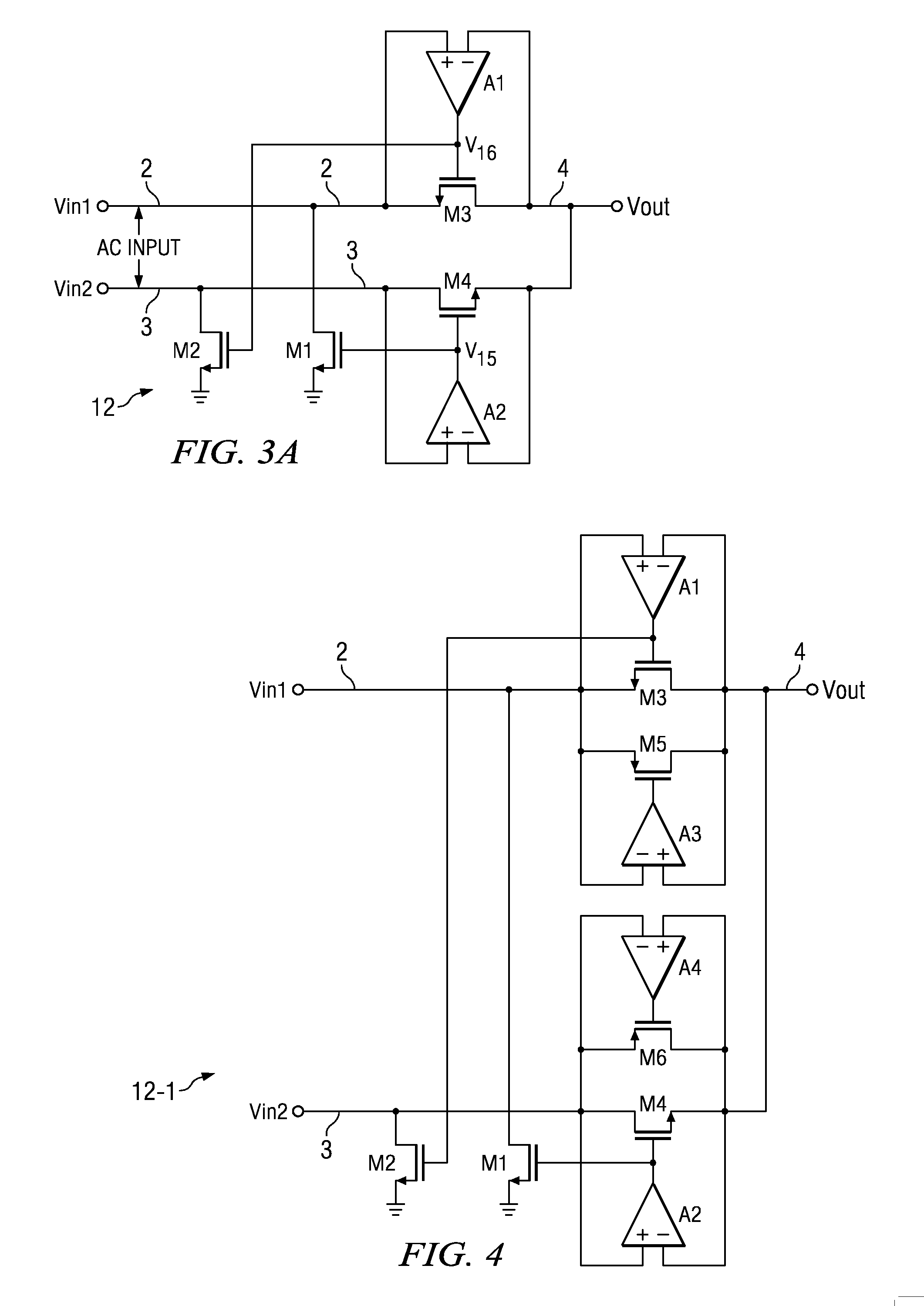Active rectifier and method for energy harvesting power management circuit
a technology of active rectifiers and power management circuits, applied in the field of low power rectifiers, can solve the problems of large voltage drop, increase the amount of current consumed, and inability to meet the requirements of low-voltage signals, and achieve the effect of low-power active rectifiers and efficient rectifying very low-power signals
- Summary
- Abstract
- Description
- Claims
- Application Information
AI Technical Summary
Benefits of technology
Problems solved by technology
Method used
Image
Examples
Embodiment Construction
[0031]When energy is to be micro-harvested or scavenged from very low voltage, low-frequency power signal sources such as ambient solar, vibrational, or thermal power sources, it is highly desirable to be able to rectify the low voltage, low-frequency signals much more efficiently than has been achievable in the prior art.
[0032]To this end, FIG. 3A shows a generalized diagram of a full wave active rectifier 12 which can be implemented in standard CMOS technology as shown in subsequently described FIG. 3B. Rectifier 12 includes a N-channel switching transistor M3 having a source (or drain) connected to conductor 2 on which an input voltage Vin1 is received, and also includes a N-channel switching transistor M4 having a drain (or source) connected to conductor 3 on which an input voltage Vin2 is received. A harvested AC input signal Vin1-Vin2 can be applied between conductors 2 and 3. The input signals Vin1 and Vin2 can come, for example, from a piezo harvester or an induction harvest...
PUM
 Login to View More
Login to View More Abstract
Description
Claims
Application Information
 Login to View More
Login to View More - R&D
- Intellectual Property
- Life Sciences
- Materials
- Tech Scout
- Unparalleled Data Quality
- Higher Quality Content
- 60% Fewer Hallucinations
Browse by: Latest US Patents, China's latest patents, Technical Efficacy Thesaurus, Application Domain, Technology Topic, Popular Technical Reports.
© 2025 PatSnap. All rights reserved.Legal|Privacy policy|Modern Slavery Act Transparency Statement|Sitemap|About US| Contact US: help@patsnap.com



